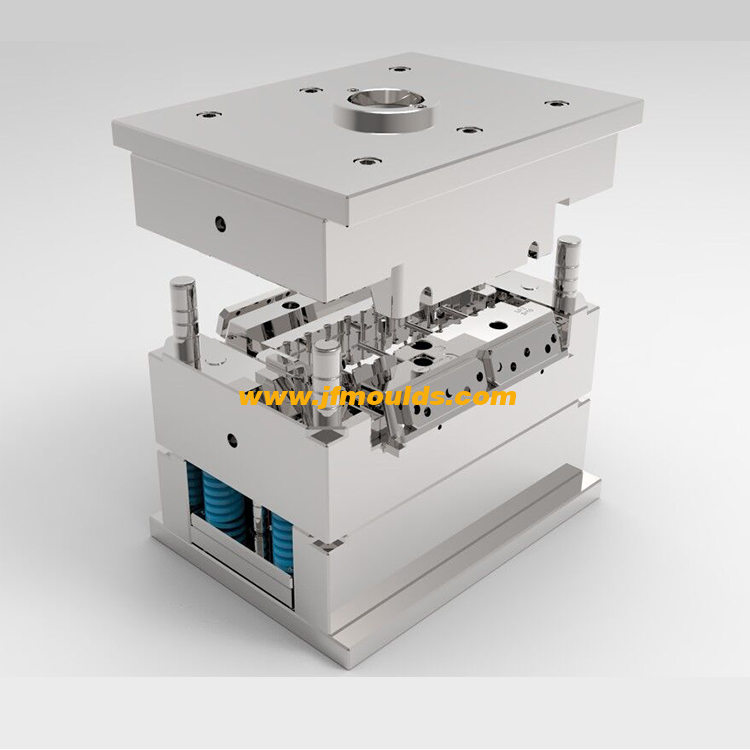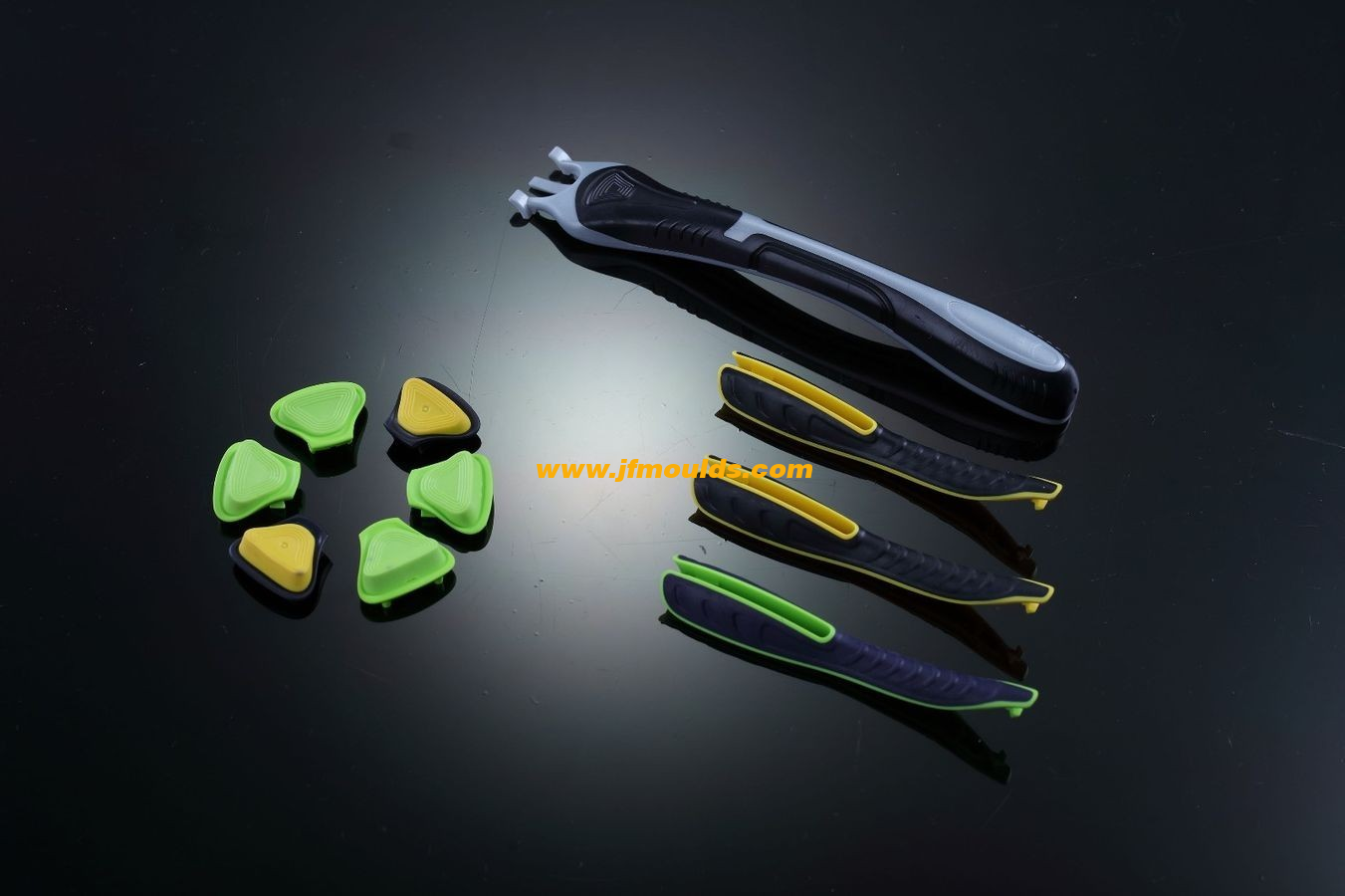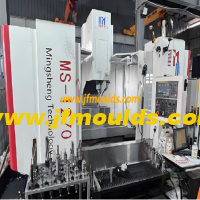Performance characteristics and selection criteria of injection molds
Performance characteristics and selection criteria of injection molds
This article systematically expounds the key characteristics, mainstream types, selection basis and development trends of injection mold materials. By analyzing the application performance of mold steel, alloy materials, new composite materials, etc. in injection molds, and combining the material performance indicators with the actual production requirements, it provides a reference for the rational selection of injection mold materials. At the same time, explore the development directions of the industry in terms of high performance, lightweight, environmental protection, etc., to help improve the manufacturing level of injection molds and the production quality of plastic products
1.Introduction
Injection molds are a key process in the molding of plastic products, and their performance directly affects the quality, production efficiency and cost of plastic products. As the material basis of the mold, the mold material plays a decisive role in the mold's strength, wear resistance, corrosion resistance, processing performance, etc. With the continuous expansion of the application fields of plastic products, from daily necessities to precision electronic components, the requirements for injection molds are increasing day by day, which also promotes the continuous development and innovation of injection mold materials. A thorough understanding of the characteristics and applications of injection mold materials is an important prerequisite for optimizing mold design, enhancing the service life of molds and improving production efficiency.
2.Performance Requirements for Injection Mold Materials
2.1 Mechanical Properties
1.Strength and hardness: During the injection molding process, the mold needs to withstand the impact of high-temperature and high-pressure plastic melt, so it must have sufficient strength and hardness. High strength can prevent the mold from deforming or cracking under injection pressure. For example, large automotive bumper injection molds need to withstand hundreds of tons of clamping force and require the material's yield strength to reach a relatively high level. High hardness can enhance the wear resistance of the mold, reduce the wear of forming components such as the core and cavity, and extend the service life of the mold. For instance, the molds used for manufacturing plastic gears require the material hardness to be between HRC50 and 60 to ensure the long-term accuracy of the gear tooth profile.
2. Toughness: Toughness refers to the ability of mold materials to resist impact and cracking. During the opening and closing of the mold and when the plastic melt rapidly fills the cavity, the mold will be subjected to instantaneous impact forces. Good toughness can prevent the mold from cracking, falling off and other phenomena. Especially for molds of complex shapes or thin-walled products, toughness is of vital importance. For instance, injection molds for mobile phone casings need to have a certain degree of toughness while ensuring strength to cope with frequent opening and closing actions.
2.2 Thermal Performance
1. Thermal stability: During the injection molding process, the mold temperature rises as the plastic melt is injected, and then it needs to be rapidly cooled and set. The mold material needs to maintain dimensional stability at high temperatures, not undergo thermal deformation, and have stable performance during repeated heating and cooling cycles. For instance, when manufacturing polycarbonate (PC) products, the molding temperature can reach as high as 280-320 ℃, and the mold material must have good thermal stability to ensure the dimensional accuracy of the products.
2. Thermal conductivity: Efficient heat transfer helps to shorten the cooling time of plastic products and enhance production efficiency. Materials with good thermal conductivity can ensure uniform temperature distribution in molds and reduce defects such as warping and deformation of products caused by uneven cooling. For instance, aluminum alloy mold materials have a thermal conductivity much higher than that of mold steel and are often used in injection molding production scenarios where high cooling efficiency is required.
2.3 Chemical Properties
1.Corrosion resistance: Some plastic raw materials will decompose and produce acidic gases during the molding process (such as PVC decomposing to produce hydrogen chloride), or plastics containing corrosive additives will be used. This requires the mold material to have good corrosion resistance. Otherwise, the surface of the mold will be corroded, affecting the surface quality of the product and even leading to the scrapping of the mold. For molds used in the production of PVC pipe fittings, corrosion-resistant mold steel should be adopted or surface anti-corrosion treatment should be carried out.
2. Oxidation resistance: In a high-temperature injection molding environment, mold materials are prone to oxidation when in contact with air. The formation of oxide scale on the surface can affect the demolding performance of the mold and the appearance of the product. Materials with good oxidation resistance can reduce surface oxidation and maintain the good working condition of the mold.
Storage basket mold Manufacturer in China (jfmoulds.com)

3.Main Types of Injection Mold Materials
3.1 Die steel
1. Pre-hardened die steel: Pre-hardened die steel has undergone pre-hardening treatment before leaving the factory, with a hardness generally ranging from HRC28 to 45. It has excellent machinability and can be directly machined into shape without the need for further quenching treatment, effectively avoiding deformation issues during heat treatment. Common grades include P20, 718, etc. P20 steel is widely used and suitable for the production of plastic molds with general requirements, such as the shells of household appliances and toy molds, etc. 718 steel further enhances its purity and toughness on the basis of P20, making it suitable for plastic products with high surface quality requirements, such as automotive interior parts molds.
2. Age-hardening die steel: Age-hardening die steel represented by NAK80 has a relatively low hardness after solution treatment, which is convenient for processing and forming. After forming, it can obtain high hardness (HRC38-43) and good polishing performance through aging treatment. Its mirror polishing effect is excellent and it is often used in the production of molds for plastic products such as optical lenses and cosmetic packaging, which have extremely high requirements for surface finish.
3. Quenched and tempered die steel: H13 is a typical quenched and tempered die steel, featuring high hardness, high toughness and excellent thermal fatigue resistance. It is suitable for molds that bear significant thermal and mechanical loads, such as die-casting molds and thermoplastic injection molds. After quenching and tempering treatment, the hardness of H13 steel can reach HRC48-52, and it is often used in the production of molds for automotive bumpers, large plastic boxes, etc.
4. Corrosion-resistant die steel: S136 is a commonly used corrosion-resistant die steel with a relatively high chromium content, featuring excellent corrosion resistance and polishing performance. It can not only resist the corrosive gases produced by the decomposition of plastics, but also make the surface of the mold achieve a mirror-like effect. It is suitable for the production of PVC products, medical devices and other molds with high requirements for corrosion resistance and surface quality.
3.2 Alloy Materials
1.Aluminum alloy: Aluminum alloy features low density, good thermal conductivity (about 3 to 5 times that of die steel), and excellent processing performance. For instance, 6061 aluminum alloy is often used to manufacture small, precise injection molds that have high requirements for cooling efficiency, such as molds for 3C product components. However, its hardness and wear resistance are relatively low. Usually, surface treatment (such as hard anodizing) is needed to improve surface properties to meet the requirements of mold usage.
2. Copper alloy: Copper alloy has excellent thermal conductivity. Beryllium copper alloy is a commonly used copper alloy material in injection molds. It not only conducts heat quickly, but also has high strength and hardness. It can be used to make local inserts in molds, such as embedding beryllium copper inserts in areas where mold cooling is difficult, to accelerate heat transfer, improve cooling effect and enhance production efficiency. However, the high cost of copper alloys limits their wide application in the overall structure of molds.
3.3 New Composite Materials
1.Carbon fiber reinforced composite materials: Carbon fiber reinforced composite materials feature high strength, high rigidity and low density. Their specific strength and specific modulus are much higher than those of traditional metal materials. In the field of injection molds, lightweight structural components that can be used to manufacture molds, such as the support frame and ejection mechanism of molds, etc. Although its application in injection molds is still in the exploratory stage at present, with its excellent performance, it is expected to play an important role in high-end mold manufacturing in the future.
2. Metal matrix composites: Metal matrix composites use metals as the matrix and add reinforcing phases such as ceramic particles and carbon fibers, which can significantly enhance the hardness, wear resistance and thermal stability of the materials. For instance, silicon carbide particle reinforced aluminum matrix composites can be used to manufacture wear-resistant components of injection molds, such as sliders and guide pins, effectively extending the service life of the molds.

Two color mould Manufacturer in China (jfmoulds.com)
4. Basis for Selecting Injection Mold Materials
4.1 Requirements for Plastic products
1. Product shape and size: Plastic products with complex shapes require molds to have fine structures. Materials with good processing performance should be selected, such as precast mold steel, which is convenient for processing complex cavities. For large product molds, the materials need to have sufficient strength and rigidity to withstand injection pressure, such as using high-strength mold steels like H13.
2. Surface quality requirements: For products with high requirements for surface finish and transparency, such as optical lenses and transparent plastic containers, materials with good polishing performance, such as NAK80 and S136, should be selected. For daily necessities with low appearance requirements, ordinary die steel with lower cost can be selected.
3. Performance requirements for use: If the product needs to be used in a high-temperature environment, the mold material should have good thermal stability; For products that come into contact with corrosive substances, materials with strong corrosion resistance should be selected.
4.2 Production Batch
1. Small-batch production: When it comes to small-batch production, the cost of molds is a crucial consideration. Materials with relatively low prices and good processing performance, such as P20 steel, can be selected to reduce the manufacturing cost of molds. At the same time, lightweight materials such as aluminum alloy can also be considered to shorten the production cycle.
2. Mass production: Mass production requires molds to have a long service life. Materials with high hardness, good wear resistance and excellent comprehensive performance, such as H13 steel and S136 steel, should be selected. Although the material cost is relatively high, the cost of mold sharing per unit product can be reduced by extending the service life of the mold.
4.3 Cost Factors
The cost of mold materials accounts for a relatively large proportion of the total mold cost, and it is necessary to comprehensively consider the material price, processing cost and service life. For instance, although beryllium copper alloy has excellent performance, it is costly and is only suitable for molds that have extremely high requirements for cooling efficiency and sufficient budgets. Ordinary die steel is low in price and suitable for molds where performance requirements are not particularly strict.
5.Injection Mold Materials
5.1 High performance
With the development of plastic products towards high precision and high performance, the performance requirements for mold materials are constantly increasing. In the future, die steel will develop towards higher strength, higher toughness, better thermal stability and wear resistance. By optimizing the chemical composition and heat treatment process, new die steel grades will be developed. Meanwhile, the performance of new composite materials will also continue to improve, expanding their application scope in the field of injection molds.
5.2 Lightweighting
In fields such as automobiles and aerospace, the demand for lightweight plastic products is becoming increasingly urgent, which also drives the development of injection mold materials towards lightweighting. The application of lightweight alloy materials such as aluminum alloys and magnesium alloys, as well as carbon fiber reinforced composite materials, will become more widespread. Through structural optimization and material innovation, lightweight design of molds can be achieved, reducing their weight and enhancing production efficiency.
The material of injection molds is a key factor determining the performance of the molds and the quality of plastic products. Different types of mold materials have their own characteristics. In practical applications, a comprehensive selection should be made based on factors such as the requirements of plastic products, production batches, and costs. With the development of the manufacturing industry, injection mold materials are constantly innovating and advancing in the directions of high performance, lightweight, environmental friendliness and intelligence. In-depth research on the performance and development trends of mold materials is conducive to promoting the improvement of injection mold technology, meeting the increasingly diverse production demands of plastic products, and facilitating the sustainable development of the plastic processing industry.
Related News
From technological breakthroughs to intelligent transformation
2025-07-07
From technological breakthroughs to intelligent transformation Injection mol...
The decisive methods for the height of the water outlet position beside the mold housing, the damage and deformation of the front mold cavity
2025-08-28
The decisive methods for the height of the water outlet position beside the mold...
Surface treatment of molds
2025-07-26
Surface treatment of molds1. Common surface treatment processes The purpose o...
From custom development to global supply, unlock the core driving force of modern manufacturing
2025-07-19
From custom development to global supply, unlock the core driving force of moder...
Injection molds: The "Industrial Gene" Hidden Behind Everything
2025-07-12
Injection molds: The "Industrial Gene" Hidden Behind Everything When our fing...
The surface of the mold is baked and printed bright and has surface flow marks
2025-08-02
The surface of the mold is baked and printed bright and has surface flow marksTh...





